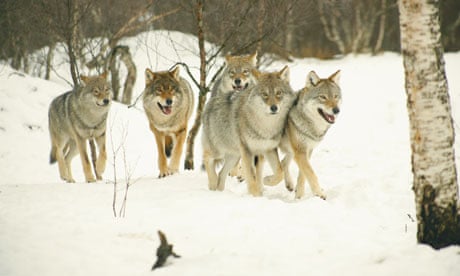 |
| Source: The Guardian |
Something I've noticed while writing
these posts is that people in first world countries are often oddly unaccepting of non-lethal human-wildlife conflict mitigation plans. This is especially true if they're focused on predators. Often the preferred solution is lethal control, with an active refusal of non-lethal methods, as can be learned by the frequent culling of animals such as wolves, bears, and coyotes throughout many countries. This post will focus on wolves in Norway, which are kept at artificially low numbers through culling, due to local fear and perceived threat to livestock.


